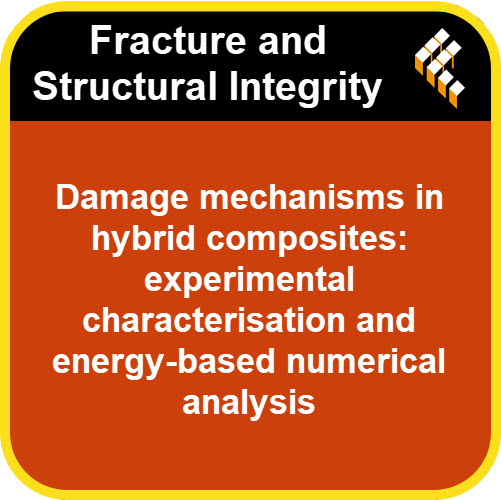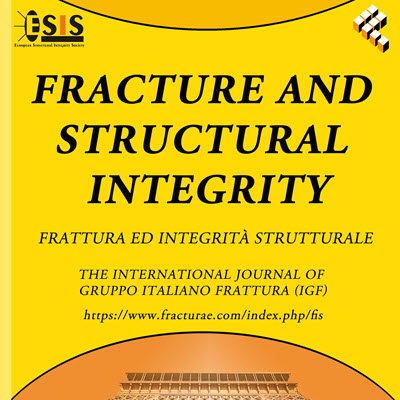Fracture and Structural Integrity: The Podcast
Stay at the cutting edge of fracture mechanics and structural integrity research with the official podcast of the Fracture and Structural Integrity journal. Join us for insightful interviews with top researchers, in-depth discussions of groundbreaking papers, and explorations of emerging trends in the field.
RSS Spotify YouTube Amazon Music
Damage mechanisms in hybrid composites: experimentalcharacterisation and energy-based numerical analysis
2025-05-21
https://www.fracturae.com/index.php/fis/article/view/5450
This study analyses the failure mechanisms of bilayer hybrid composites, consisting of carbon and glass fibres embedded in an epoxy matrix, under bending loads. The objective is to evaluate how different hybrid configurations influence failure evolution and mechanical performance. To achieve this, specimens are submitted to 3-point bending tests, and 3D finite element models are developed to simulate the experimental setup. The numerical models incorporate a continuum damage mechanics model to capture intralaminar failure and a surface-based cohesive behaviour for interlaminar damage. The results show that hybrid laminates exhibit intermediate strength and displacement values compared to nonhybrid carbon and glass laminates, with the positioning of glass fibers significantly affecting bending force and displacement. Intralaminar damage is the primary failure mechanism in all configurations, followed by delamination. Additionally, placing glass fibers on the compression side reduces the overall damage, whereas placing them on the tensile side increases intralaminar failure before reaching the peak load. These findings contribute to optimizing the design of hybrid composites for bending applications by providing information about the relationship between material configuration and failure mechanisms, ultimately improving their structural efficiency and durability in engineering applications.
DownloadFiletype: MP3 - Size: 30 MB - Duration: 25:43m (160 kbps 24000 Hz)
Powered by Podcast Generator, an open source podcast publishing solution | Theme based on Bootstrap
